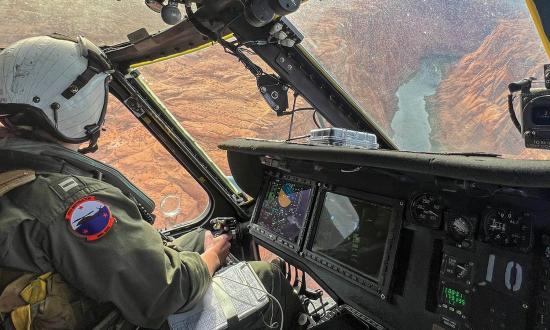Balikatan 2024 was the 39th iteration of an exercise that began in 1991 as U.S. bases in the Philippines were closing. The exercise—whose name comes from the Tagalog word for shoulder-to-shoulder—ran from 22 April to 10 May. This year’s activities occurred against the backdrop of dangerous confrontations between the Philippines and China, including a widely reported incident in which a China Coast Guard vessel rammed a Philippine fishing boat near Scarborough Shoal in April.
In recent years, the once-bilateral exercise has become multilateral. In 2024 it included military personnel from Australia and France—more than 16,000 soldiers, sailors, airmen, and Marines from the participants in total. According to Marine Forces Pacific, 14 additional countries sent observers.
U.S. Indo-Pacific Command says events were built around a field training exercise and a command-and-control exercise that emphasized cyber operations and wargames. Ongoing humanitarian civic assistance activities in parts of the Philippines also were rolled into Balikatan this year.
Specific tasks included territorial-defense activities protecting key terrain in Luzon and Palawan; relocating long-range, precision-strike systems and targeting simulated threats; tracking and targeting simulated air and missile threats; and integrating multilateral air and land platforms “to increase awareness of the maritime security situation.”
One of the culminating events was a “SinkEx” in the South China Sea. The target ship was the retired Philippine replenishment tanker Lake Caliraya—widely noted as the Philippine Armed Forces’ only Chinese-made vessel. A variety of artillery shells, JDAM bombs, and missiles were used, including a Philippine C-Star antiship cruise missile.
Some participating units included the Philippine Navy patrol frigate Jose Rizal; Philippine Air Force’s 7th tactical fighter squadron; French frigate Vendémiaire; U.S. Air Force 13th Fighter Squadron, flying F-16 Fighting Falcons; Royal Australian Air Force No. 2 Squadron, flying the E-7 Wedgetail; Marine Air Control Squadron 4; 3d Marine Littoral Regiment; Marine Air Control Group 38; U.S. Air Force 16th Special Operations Squadron, flying the AC-130J Ghostrider; and U.S. Navy Patrol and Reconnaissance Squadron 10, flying the P-8A Poseidon.
The exercise also marked the operational debut of the Marine Corps’ Amphibious Combat Vehicle (ACV), deploying from the USS Harpers Ferry (LSD-49).






